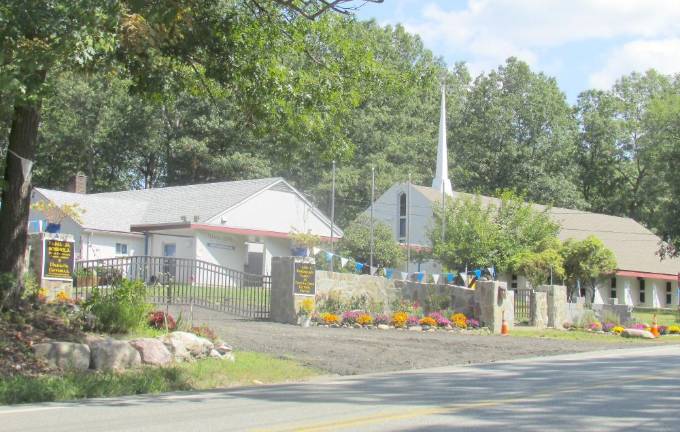Greek religious group seeks expansion approvals for church property

Holy Institution Panagia Soumela Inc., at 253 Marshall Hill Road, submitted an application to the West Milford Board of Adjustment (BOA) seeking approval for “bulk and use variances” and a “preliminary and final site plan” for new proposals on their property.
The 3.8 acres of land, and buildings, on the site originally the location of the Church of the Incarnation (Episcopal), changed owners in the fall of 2005. After membership and attendance decreased significantly, the Episcopal Diocese of Newark had put the property and buildings up for sale. Now it has been purchased by Holy Institution Panagia Soumela Inc., a Greek orthodox shrine church dedicated to bringing a 1,500-year-old tradition to honor the Virgin Mary of Mount Mela to America.
According to the Holy Institution Panagia Soumela website, several key events on the calendar include “The Dormition of the Virgin Mary” annually on Aug. 15. According to the site, many people travel there to spend that weekend on campgrounds that have been established — playing music, dancing, and doing theatrical reenactments about genocide and daily life in the historic homeland. Holy Institution Panagia Soumela is a religious, educational and non-profit corporation organized under IRS Section 501 (c) (3).
The application to the BOA seeks a use variance approval for expansion of the existing non-conforming house of worship, including an addition, as well as construction of a pavilion, a bath house and storage sheds. Requested also are bulk variance setbacks between accessary buildings, specifically due to the pavilion being 6.2 feet from the house of worship, where 20 feet is required, and the bathhouse being 15.5 feet from the storage sheds, where 20 feet is required there as well.
The Episcopalians built their first church on the site in 1954. It served as a church and all-purpose building from 1954 to 1967. During the time that the Rev. Ava Decker was the priest, from 1963 to 1971, a second new church was built. The first and second church buildings, along with a house where the priest lived, are still the main buildings on the property. For the Episcopal church, construction building costs were reduced with most of the inside work — from painting to fashioning the altar and lecterns and laying floors — was done by the Episcopal parishioners. The new owners did extensive renovations to the church to turn it into a Greek facility.